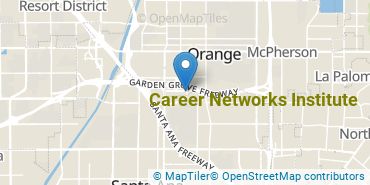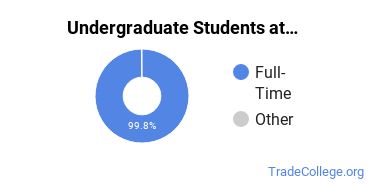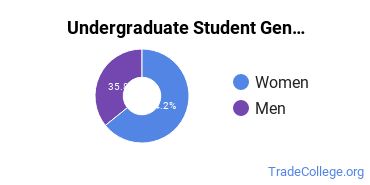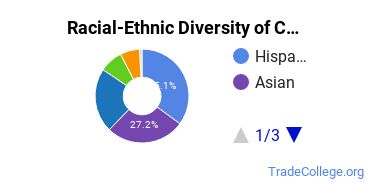Career Networks Institute Trade Programs
Career Networks Institute is a private for-profit institution located in Santa Ana, California. The location of CNI College is great for students who prefer living in an urban area.
Featured schools near , edit
Where Is Career Networks Institute?

Contact details for CNI College are given below.
| Contact Details | |
|---|---|
| Address: | 1610 E. Saint Andrew Place Suite 200, Santa Ana, CA 92705 |
| Phone: | 714-437-9697 |
| Website: | www.cnicollege.edu |
Can I Afford CNI College?
Student Loan Debt
It's not uncommon for college students to take out loans to pay for school. In fact, almost 66% of students nationwide depend at least partially on loans. At CNI College, approximately 53% of students took out student loans averaging $8,381 a year. That adds up to $33,524 over four years for those students.
Career Networks Institute Undergraduate Student Diversity

Gender Diversity
Of the 521 full-time undergraduates at CNI College, 32% are male and 68% are female.

Racial-Ethnic Diversity
The racial-ethnic breakdown of Career Networks Institute students is as follows.

| Race/Ethnicity | Number of Grads |
|---|---|
| Asian | 163 |
| Black or African American | 29 |
| Hispanic or Latino | 168 |
| White | 110 |
| International Students | 4 |
| Other Races/Ethnicities | 47 |
Career Networks Institute Trade School Concentrations
The table below shows the number of awards for each concentration.
| Major | Basic Certificate | Associate’s | TOTAL |
|---|---|---|---|
| Magnetic Resonance Imaging (MRI) Technology | 0 | 79 | 79 |
| Surgical Technology | 0 | 21 | 21 |
| Medical/Clinical Assistant | 12 | 0 | 12 |
| Licensed Practical/Vocational Nurse Training | 0 | 0 | 0 |
| TOTAL | 12 | 100 | 112 |
References
*The racial-ethnic minorities count is calculated by taking the total number of students and subtracting white students, international students, and students whose race/ethnicity was unknown. This number is then divided by the total number of students at the school to obtain the racial-ethnic minorities percentage.
More about our data sources and methodologies.
Featured Schools
 Request Info
Request Info
|
Southern New Hampshire University You have goals. Southern New Hampshire University can help you get there. Whether you need a bachelor's degree to get into a career or want a master's degree to move up in your current career, SNHU has an online program for you. Find your degree from over 200 online programs. Learn More > |
